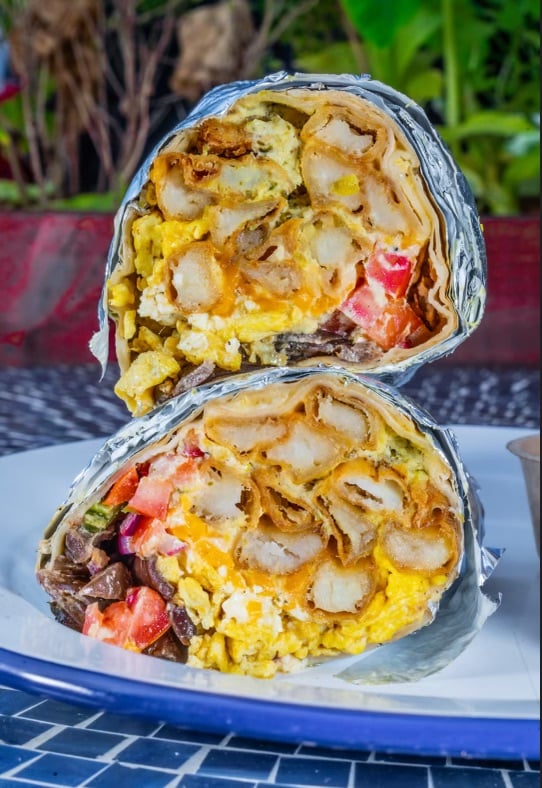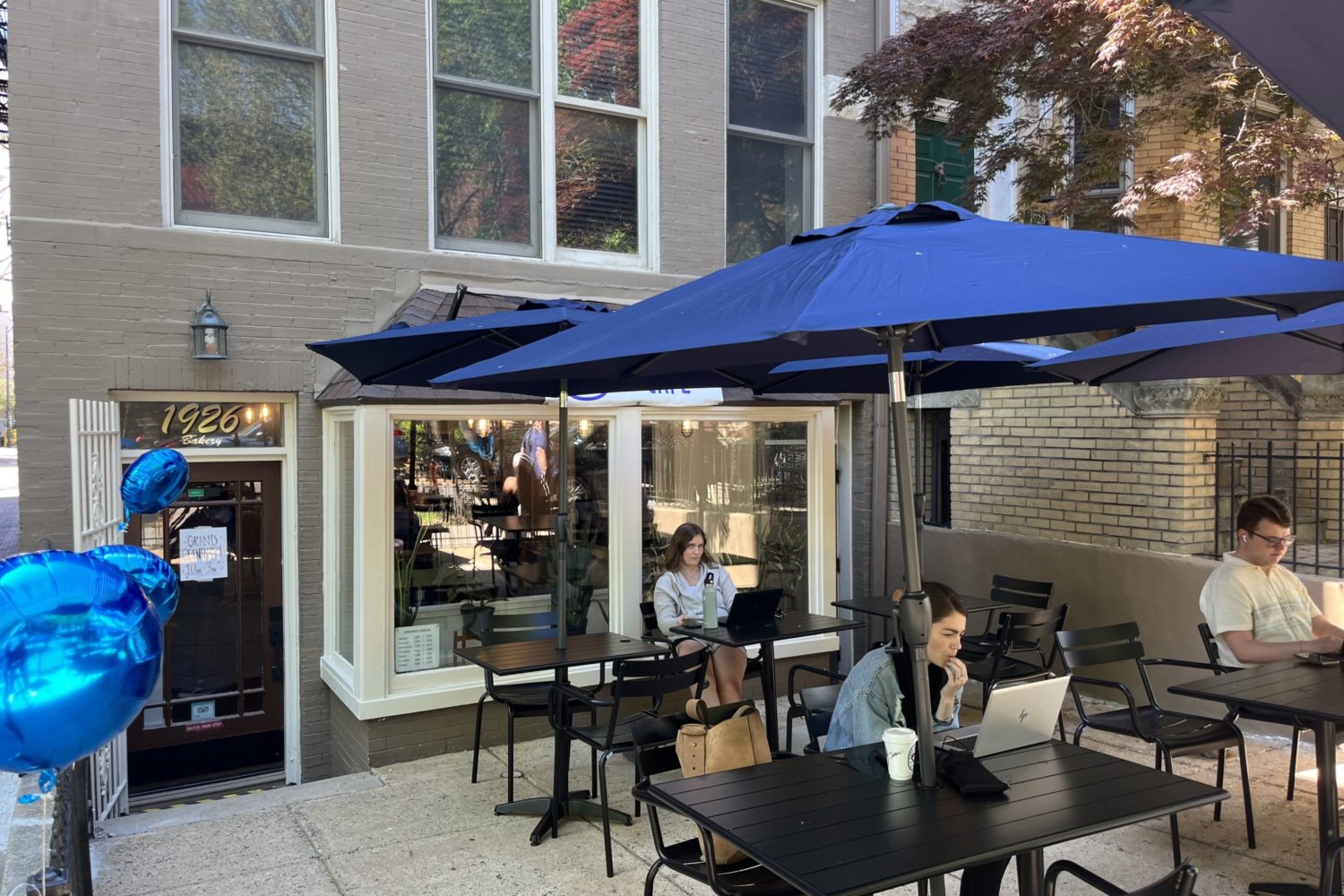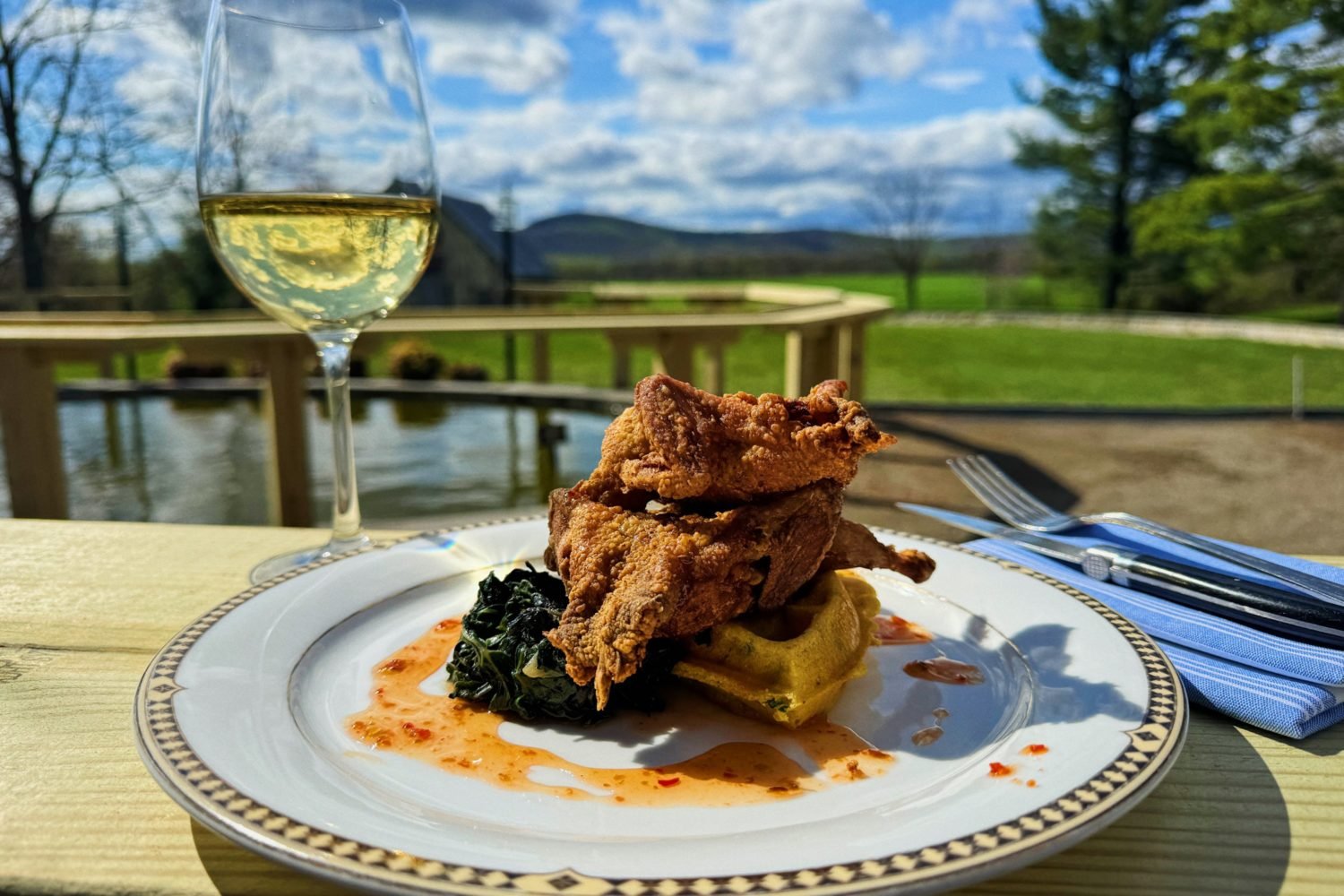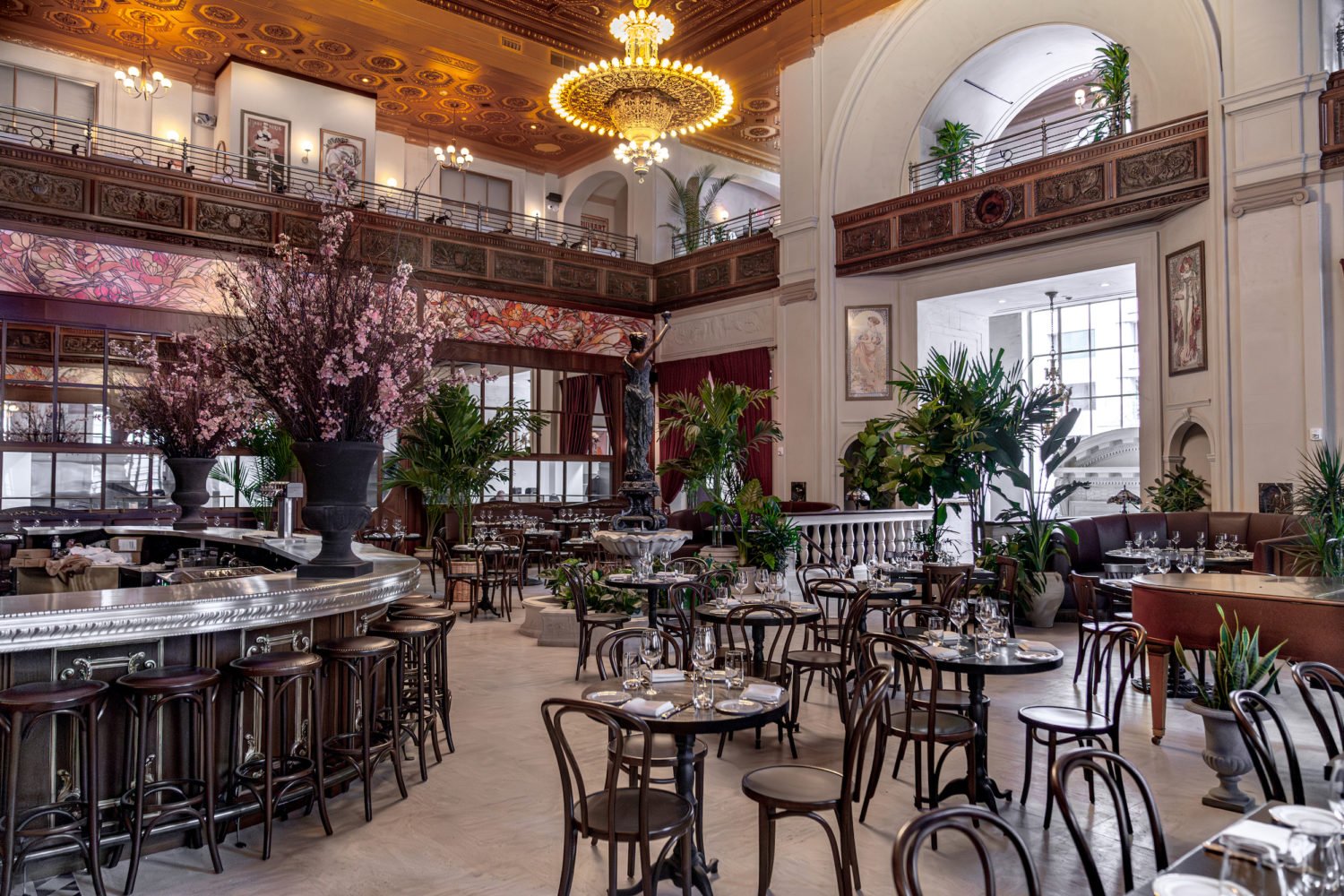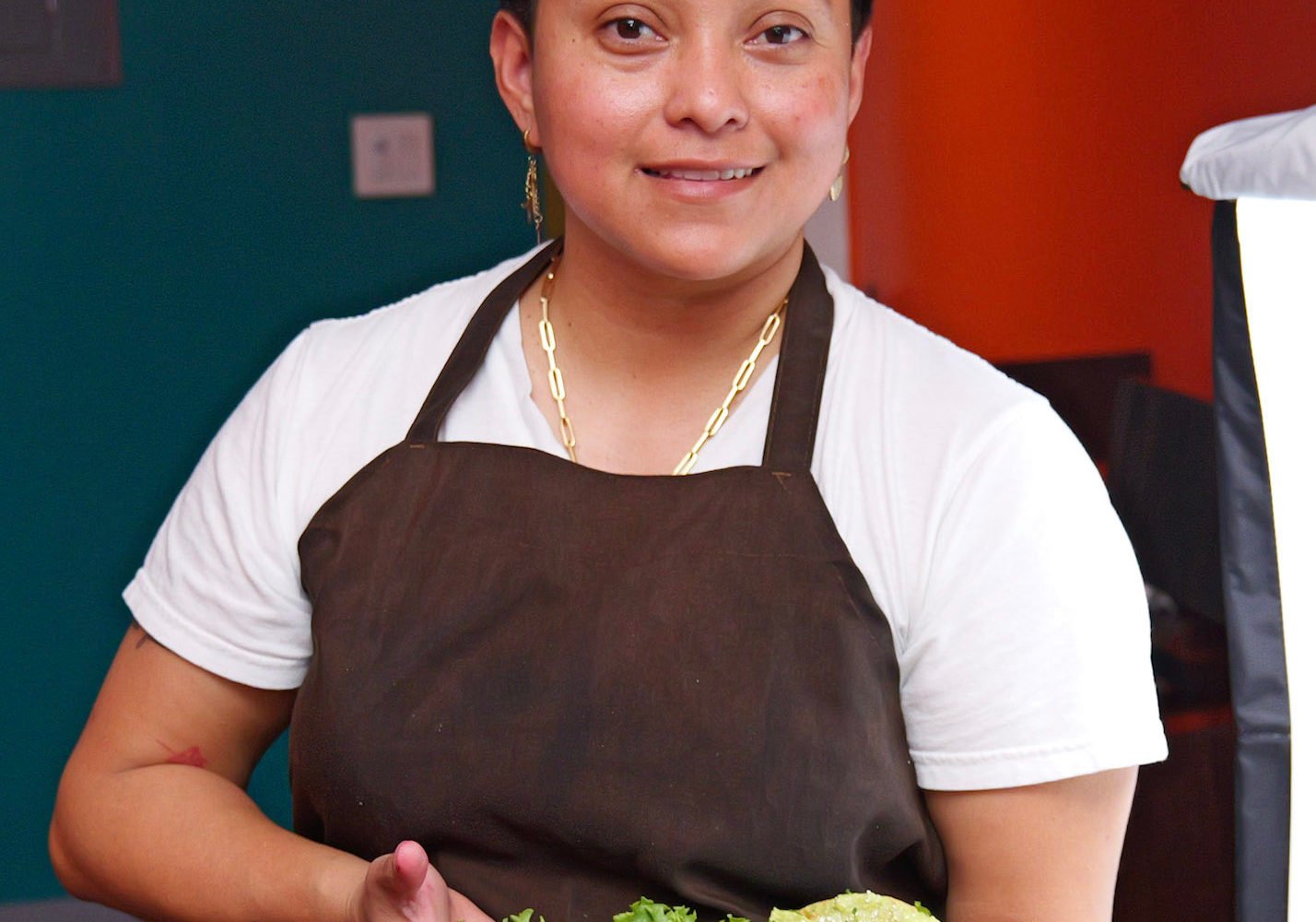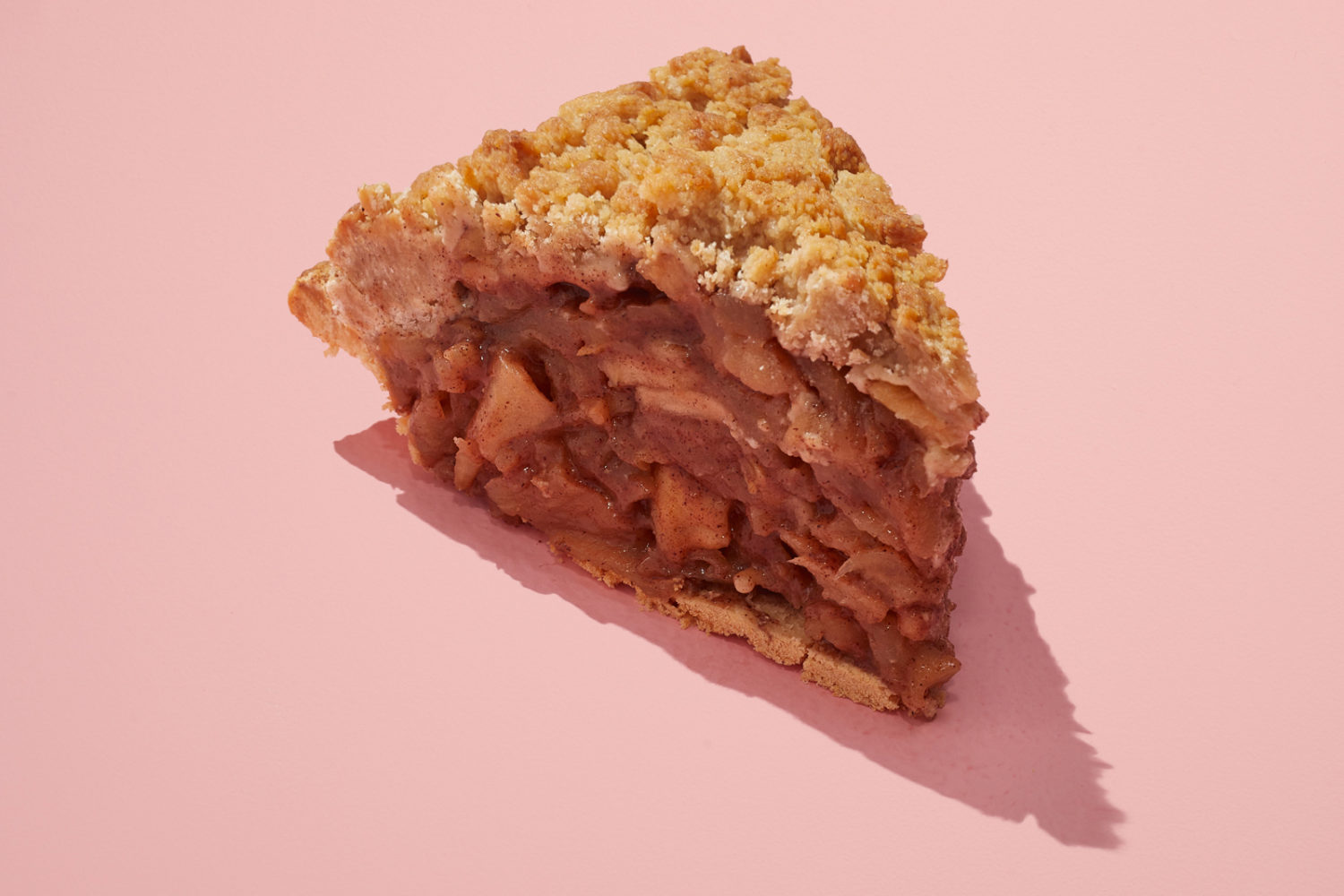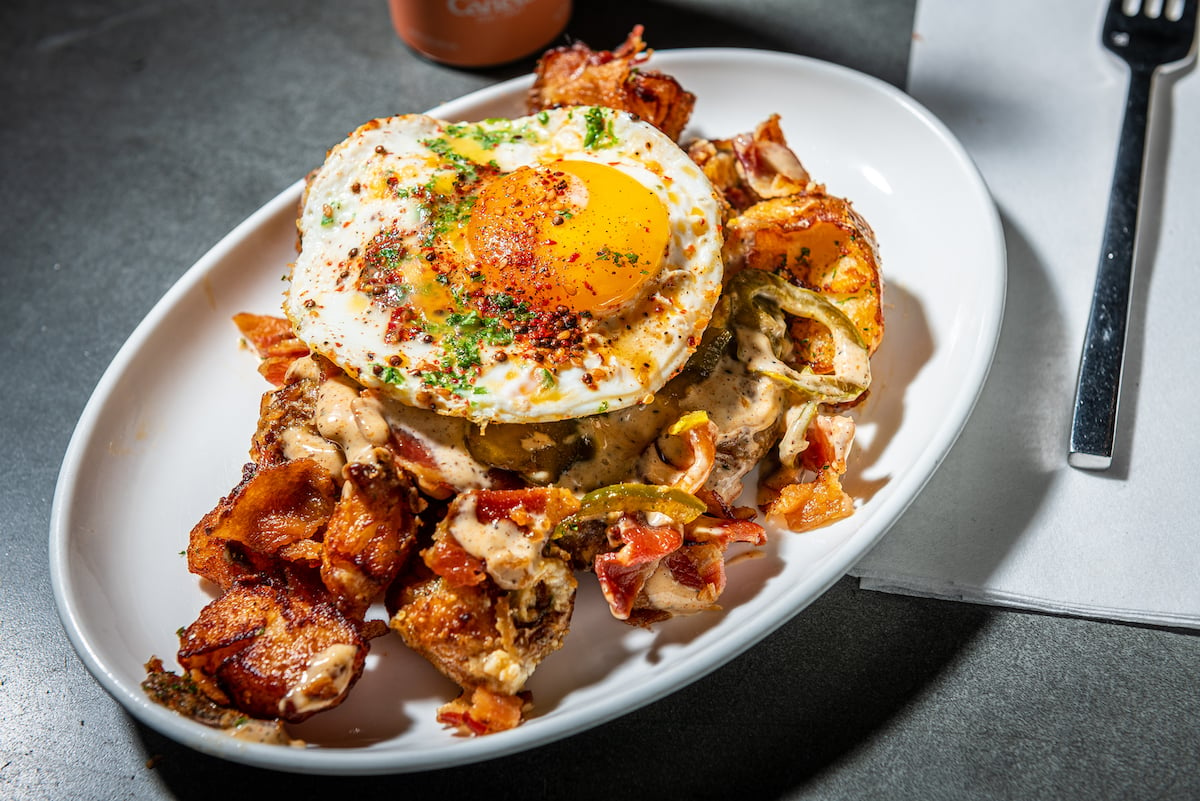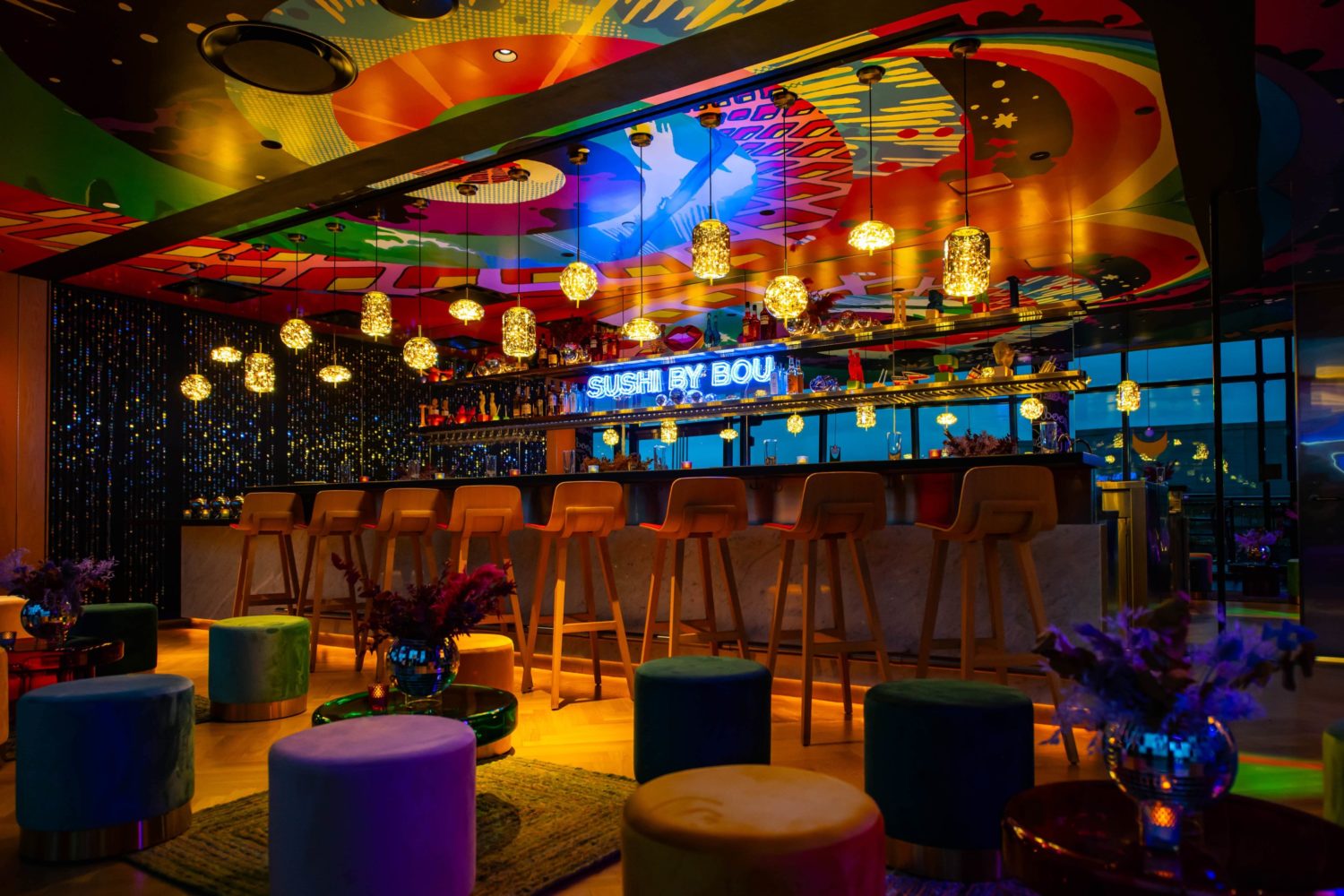Opening a restaurant is always risky business. So why not play the odds? Set up camp on a newly glamorous stretch of Wisconsin Avenue in Chevy Chase. Give the place a brash name—like Famoso Restaurant. And go for visual flash with dramatic red votive chandeliers and splashy abstract paintings.
That’s what Famoso owner Iraklis Karabassis appears to be about at his new eatery. His hires have been calculated as well. He brought on DC institution Ralph Fredericks, the longtime maître d’ at Coeur de Lion, to cosset and fuss over diners in the low-lit dining room. General manager Joseph Giannino, for many years Franco Nuschese’s major-domo at Cafe Milano, was enlisted to bring some Milano-like sparkle to the proceedings. Karabassis himself is a partner at Milano and owns a platoon of Benetton and Max Mara stores, including the Max Mara that shares real estate with Famoso and its more casual sibling, M Cafe and Bar.
The wild card is chef Gabriele Paganelli, who comes by way of the well-regarded Romagna Mia in Toronto. He is one of that new breed of “consulting chefs”—a chef who visits rather than stays. Having installed Romina Lugaresi from his Toronto restaurant to take care of day-to-day chef duties at Famoso, Paganelli pops in every couple of weeks to make sure things are as they should be.
For such an otherwise mind-the-details endeavor, entrusting the food to a consultant is chancy. But so far, so good.
Paganelli’s passion is the food of his native Emilia-Romagna. Raised in Ravenna, on the Adriatic coast, the land of white truffles and fossa (a salty pecorino that’s been buried in the ground for three months), he came of age working in his family’s trattoria. His most heartfelt dishes—as interpreted by Lugaresi—feel as though they’ve been passed down for generations.
Never mind that the risotto is flambéed at the table in an oversize wheel of Parmigiano-Reggiano—showy but not necessary. The essence of the dish is in the depth of detail: the intense pheasant broth and meat, the nutty texture of the arborio rice, the earthy jolt from the generous shaving of truffles.➝
A dish known as gran fritto is a stunning heap of baby smelts, shrimp, calamari, and zucchini—carefully fried and whisper-light.
Similarly, the house-cured bresaola—razor thin slices of dried, tender beef—gets help from its backup players: well-dressed greens and a lick-the-fork terrine of mascarpone, Gorgonzola, figs, and walnuts. This isn’t your average charcuterie plate.
Paganelli also offers up some memorable handmade pastas from old family recipes. The Romagnan strozzapreti—“strangle the priest”—is another name for pasta “twists” with sausage ragu. Piacenza ravioli, filled Romagna-style with earthy chopped greens and ricotta and sauced with sage-scented butter, are a study in contradiction, delicate squares of pasta with a sturdy filler—they’d be better still if sauced with more restraint (In Italy, pasta is kissed with sauce, not smothered). One back-to-the-drawing-board effort: A plate of “badly cut” pasta—handcut noodles—with seafood and white beans is oddly watery and flavorless.
For diners looking beyond a meal of pasta or risotto, there’s plenty of other territory: olive-crusted black cod, the salty black olives giving way to flaky white flesh; eggplant-stuffed lamb chops; and bistecca a la fiorentina, perfectly grilled prime T-bone, sliced and drizzled with olive oil and draped with slivers of zucchini. Perhaps the sleeper on the menu, though, is crisp-skinned roast chicken stuffed with a tangle of shredded beets and apples braised in Chianti. It is a warmer winter plate that gives lie to the notion that chicken has to be boring.
Desserts, by pastry chef Susanna Ortega from Leopold’s Kafe & Konditorei, are for the most part as successful as all that has come before. Vin santo gelato is a lush cross between custard and ice cream. Cassata all’Italiana is a melt-in-the-mouth cake of frozen cream studded with caramelized hazelnuts and pistachios.
Wines include regional Italian picks by both the glass and bottle; sadly the Romagna region’s famed Albaro white doesn’t make a showing.
If early visits had the feel of a dress rehearsal—spoons that never showed up, courses that lagged, dishes not quite as described—the place has a more well-oiled feel these days.
With all its potential, Famoso may ultimately surprise even Karabassis and become a place that’s talked about more for the food than its flash.
Paganelli also oversees the menu at the casual M Cafe downstairs from Famoso. With an edgy tile mural on one wall and a backlit screen of amber on another, this stylish cafe is a welcome antidote to the chainmania in Friendship Heights. The menu is big—too big; the food has its ups and downs—but you can’t go wrong with the mortadella and shaved-artichoke panini, a soulful lasagna Bolognese, the pizza Margherita, or veal tonno, thin slices of rosy veal with creamy tuna sauce—a zesty rendering of the northern-Italian classic. Miniature Italian canapés are lined up in rectangular dishes on the bar (they’re free in the evenings), and the glass case of desserts alone is worth a visit—perfect mini lemon tarts with a whiff of meringue, tiny cannoli, and stacked squares of chocolate ganache and dark-chocolate mousse.






